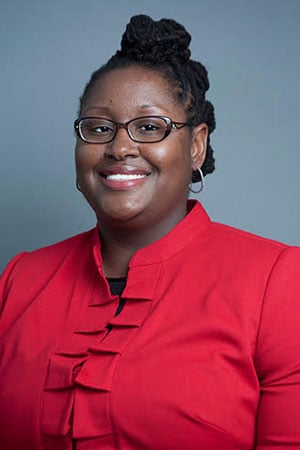Office of Diversity and Inclusion revamps annual report

Assistant provost of diversity and inclusion Nsombi Ricketts. Northwestern released its 2017 diversity and inclusion report on April 6.
April 22, 2018
The Office of Diversity and Inclusion overhauled the structure of the annual diversity and inclusion report for 2017 by breaking down data by school — both graduate and undergraduate — and featuring key initiatives.
Though the report is an annual endeavor, Nsombi Ricketts, assistant provost of diversity and inclusion, said her office decided to take a more in-depth look as opposed to addressing general trend data in the April 6 report.
“The report this year is more interactive, it’s more dynamic and it’s also aligning the efforts for diversity and inclusion across campus with our office’s four pillars, which are access, equity, enrichment and wellbeing,” Ricketts said.
Both Ricketts and Jasmine Gurneau, senior program coordinator of Native American and indigenous initiatives, said they were proud of strides made for Native American and indigenous staff, faculty and students.
The report included a section on Native American and indigenous initiatives and highlighted the 2016 creation of the Center for Native American and Indigenous Research and Northwestern’s 2017 hosting of the Urban Native Education Conference.
In addition to the section, Ricketts and Gurneau said statistics and initiatives regarding Native Americans and indigenous people were dispersed throughout the report: “American Indian/Native American” is included as a category in the statistical breakdowns of students and faculty by school.
“We have so much to share about Native American and indigenous initiatives,” Gurneau said. “They are a feature of the report, but they’re also woven throughout the entire report, and I feel like that’s a statement about it not just being an isolated initiative, but that it’s woven into the fabric of Northwestern.”
The report also provided statistical analysis on faculty in each school by gender. While 50 percent of the School of Communication’s tenure-line faculty were women in 2017, the Medill School of Journalism and McCormick School of Engineering lagged behind the others at 22 percent and 13 percent, respectively.
Ricketts said her office partners with the office of the associate provost for faculty and the Organization for Women Faculty to look at data regarding female faculty, particularly in science, technology, engineering and mathematics fields, and try to increase faculty diversity.
The report also provided data on the undergraduate class of 2020, which is majority-minority, with 46 percent of the class identifying as white. Ricketts said the class of 2019 is also majority-minority, as 48.5 percent identifies as white.
“The statistic is not important just for our office; it’s important for Northwestern,” Ricketts said. “It just means that our population is more accurately reflecting the changing demographics in the country.”
Former Associated Student Government vice president for accessibility and inclusion Austin Gardner said he was excited by the section on Student Enrichment Services, an office that was established in 2014 to support low-income and first-generation students. Gardner said this year’s report discussed the office’s expansion, which he appreciated reading about.
Considering University President Morton Schapiro’s goal of having 20 percent of the entering class in 2020 be Pell Grant-eligible, Gardner said the office needs to continue to expand.
“It’s one of those things where you won the battle but you haven’t won the war,” Gardner said. “We still have a lot more battles to win before we get to the goal.”
Email: [email protected]
Twitter: @birenbomb

